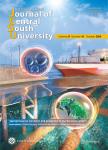A yttrium-containing high-temperature titanium alloy additively manufactured by selective electron beam melting
A yttrium-containing high-temperature titanium alloy additively manufactured by selective electron beam melting作者机构:School of Materials and Metallurgy Northeastern University State Key Laboratory of Porous Metal Materials (Northwest Institute for Nonferrous Metal Research) Centre for Advanced Materials Processing and ManufacturingSchool of Mechanical and Mining Engineering The University of Queensland Centre for Additive Manufacturing School of Aerospace Mechanical and Manufacturing EngineeringRMIT University
出 版 物:《Journal of Central South University》 (中南大学学报(英文版))
年 卷 期:2015年第22卷第8期
页 面:2857-2863页
核心收录:
学科分类:080603[工学-有色金属冶金] 08[工学] 0806[工学-冶金工程]
基 金:Projects(2014KTZB01-02-03,2014KTZB01-02-04)supported by Shaanxi Science and Technology Coordination and Innovation Program,China Project(DP120101672)supported by Australian Research Council(ARC)Discovery Grant,ARC Centre of Excellence for Design in Light Metals,Australia
主 题:titanium alloys additive manufacturing rare earth elements yttrium selective electron beam melting
摘 要:A yttrium-containing high-temperature titanium alloy(Ti-6Al-2.7Sn-4Zr-0.4Mo-0.45Si-0.1Y, mass fraction, %) has been additively manufactured using selective electron beam melting(SEBM). The resulting microstructure and textures were studied using scanning electron microscopy(SEM), transmission electron microscopy(TEM), X-ray diffraction(XRD) and electron backscattered diffraction(EBSD) and compared with the conventionally manufactured form. A notable distinct difference of microstructures is that additive manufacturing by SEBM enables homogeneous precipitation of fine Y2O3 dispersoids in the size range of 50-250 nm throughout the as-fabricated alloy, despite the presence of just trace levels of oxygen(7×10-4, mass fraction) and yttrium(10-3, mass fraction) in the alloy. In contrast, the conventionally manufactured alloy shows inhomogeneously distributed coarse Y2O3 precipitates, including cracked or debonded Y2O3 particles.



